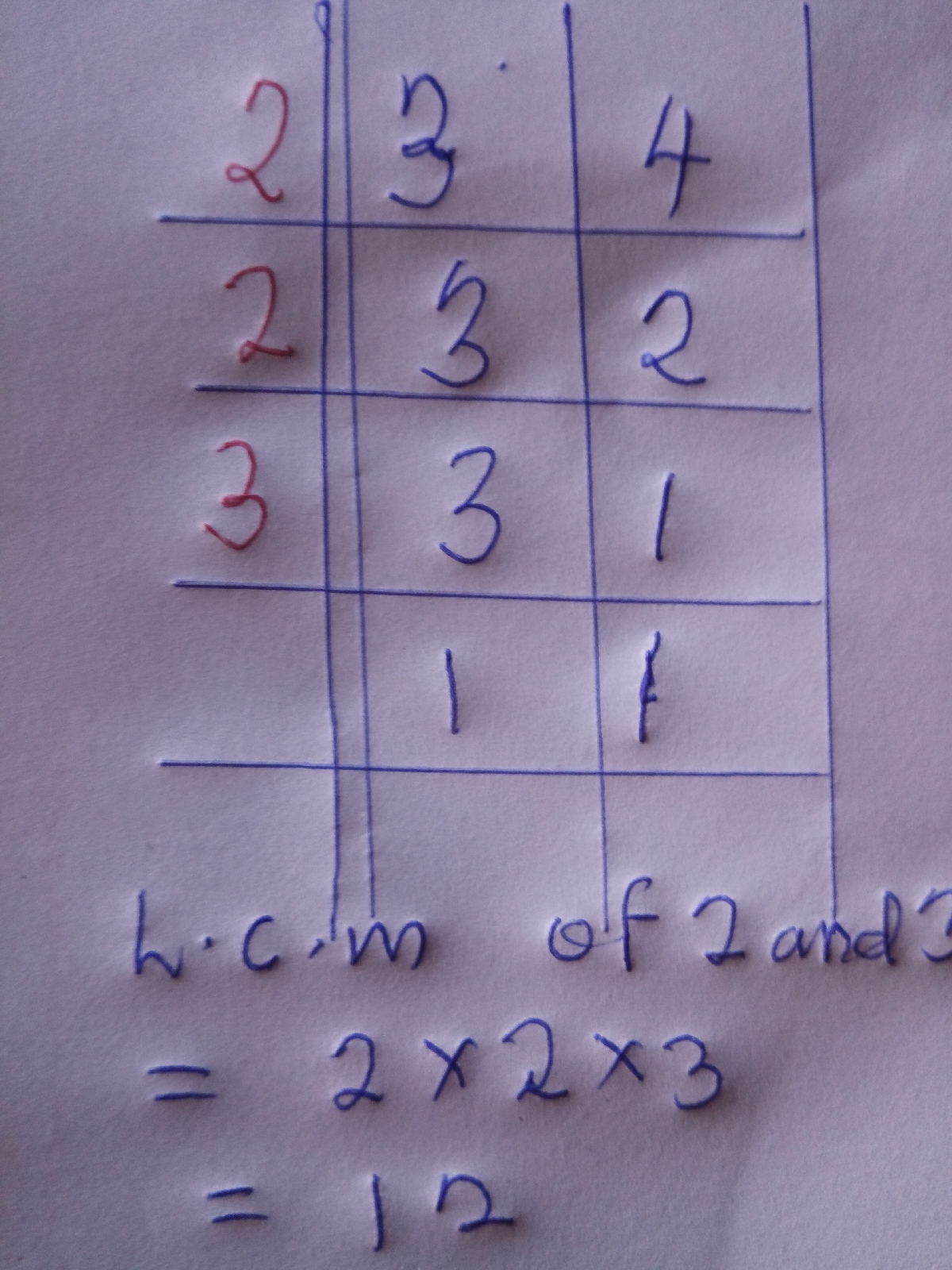L.C.M and H.C.F
Subject:
MATHEMATICS
[mediator_tech]
Term:
FIRST TERM
Week:
WEEK 5
Class:
PRIMARY 6 / BASIC 6
Topic:
LOWEST COMMON MULTIPLE (L.C.M)
HIGHEST COMMON FACTOR (H.C.F)
[mediator_tech]
Previous lesson:
The pupils have previous knowledge of
Learners are familiar with multiples of numbers and factors of numbers
that was taught as a topic in the previous lesson
Behavioural objectives:
At the end of the lesson, the learners will be able to
- say the meaning of H.C.F and L.C.M
- calculate the H.C.F and L.C.M of 2 or 3 digits using the multiple method
- calculate the H.C.F and L.C.M of 2 or 3 digits using the prime factors method
- solve real life problems on L.C.M and H.C.F
Instructional Materials:
- Wall charts
- Pictures
- Related Online Video
- Flash Cards
- Cardboard
- Understanding Mathematics Book Six.
- Multiplication table
- Charts on all factors of numbers and prime factors of number
[mediator_tech]
Methods of Teaching:
- Class Discussion
- Group Discussion
- Asking Questions
- Explanation
- Role Modelling
- Role Delegation
[mediator_tech]
Reference Materials:
- Scheme of Work
- Online Information
- Textbooks
- Workbooks
- 9 Year Basic Education Curriculum
- Workbooks
Content:
Topic : Lowest Common Multiple (LCM)
The least common multiple (LCM) and highest common factor (HCF) are two mathematical terms that describe specific ways of finding the smallest number that can be divided into a set of numbers. LCM is used to find the lowest common factors between several different numbers, while HCF is used to find the highest common factors between several different numbers. Both are important mathematical concepts that can be applied in a variety of situations and problems.
Mathematically speaking, LCM and HCF refer to two fairly well-defined processes for finding the smallest number that multiply or divide into a set of other numbers. The LCM refers to finding the smallest whole number that will multiply into each of a set of numbers. For example, if you want to find the lowest common multiple between 6 and 12, you would start by multiplying them together (6*12 = 72). The smallest whole number that can be multiplied into 72 is 24. This is your LCM for 6 and 12.
WHAT IS THE LCM OF 10 AND 20.
The smallest number which is exactly divisible by 10 and 20 is the LCM. Multiples of 10 = 10, 20, 30, 40, 50, 60, 70, ….. Multiples of 20 = 20, 40, 60, 80, 100, 120, …. Hence, the LCM of 10 and 20 is 20.
HCF is the term used to describe the highest common factor, which refers to finding the largest whole number that can divide into each of a set of numbers evenly. For example, if you want to find the HCF between 2 and 3, you can start by taking their product
HCF is a little different, and refers to finding the smallest whole number that will divide into each of a set of numbers without leaving any remainder. For example, if you wanted to find the HCF for 2, 3, and 5, you would start by dividing these numbers together (2/3/5 = 0 remainder). The smallest number that can be divided into 3 and 5 is 1, so 1 is your HCF for 2, 3, and 5.
What is the HCF of 10 and 20.
HCF of 10 and 20 is 10. Because 10 is the greatest COMMON divisor of both the numbers.
10 goes with 10 and 10 goes with 20 too..

